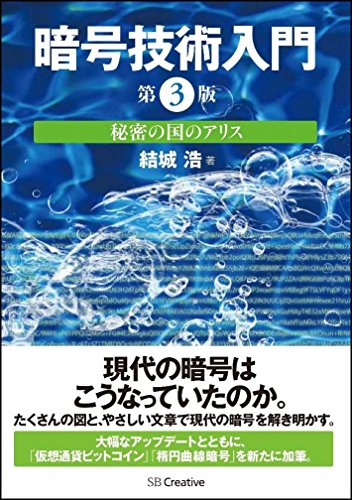- 著者
- 木塚 朝博
- 出版者
- バイオメカニズム学会
- 雑誌
- バイオメカニズム学会誌 (ISSN:02850885)
- 巻号頁・発行日
- vol.23, no.3, pp.166-171, 1999
- 参考文献数
- 40
- 被引用文献数
- 1 7
長潜時伸張反射は意図や運動プログラムによって抑制,促通(脱抑制)という制御を受け,その反射活動の変化は脊髄性の反射活動の変化より大きい.また,生活動作や運動動作における多くの場面で,長潜時反射は動作遂行に対して機能的な役割を果たしていると考えられている.本稿では,長潜時反射研究のこれまでの経緯を概説し,特に,長潜時反射が意図や運動プログラムにより変化することを報告した研究を紹介する.その上で,我々の研究結果を基に,長潜時反射の変化の程度には個人差が認められ,長潜時反射の動態は動作のパフォーマンスに結び付いている事実を示し,長潜時反射が運動評価に適用可能であることを解説する.
- 著者
- 菊池 理夫
- 出版者
- 松阪大学
- 雑誌
- 松阪大学紀要 (ISSN:09102906)
- 巻号頁・発行日
- vol.6, pp.55-63, 1989
2 0 0 0 暗号技術入門 : 秘密の国のアリス
- 著者
- 中島 隆博
- 出版者
- 東京大学中国哲学研究会
- 雑誌
- 中国哲学研究 (ISSN:09157921)
- 巻号頁・発行日
- no.7, pp.p46-122, 1993-12
2 0 0 0 文楽人形の演技を解析--CGの感情表現を豊かにする技術
- 著者
- 高森 年 服部 元史
- 出版者
- 日本工業出版
- 雑誌
- 画像ラボ (ISSN:09156755)
- 巻号頁・発行日
- vol.11, no.7, pp.13-19, 2000-07
2 0 0 0 標準的なゲームプレイヤにとって自然に見える疑似乱数列の生成法
- 著者
- 野村 久光 テンシリリックン シラ 池田 心
- 雑誌
- ゲームプログラミングワークショップ2013論文集
- 巻号頁・発行日
- pp.27-34, 2013-11-01
- 著者
- 久野 能弘
- 出版者
- 一般社団法人日本認知・行動療法学会
- 雑誌
- 行動療法研究 (ISSN:09106529)
- 巻号頁・発行日
- vol.41, no.2, pp.91-95, 2015-05-31
2 0 0 0 日本行動分析学会「体罰」に反対する声明文の策定にあたって
- 著者
- 島宗 理
- 出版者
- 日本行動分析学会
- 雑誌
- 行動分析学研究 (ISSN:09138013)
- 巻号頁・発行日
- vol.29, no.2, pp.94-95, 2015-02-25
2 0 0 0 手塚と石森と「オリジナリティ」? (特集 オリジナルって何?)
- 著者
- 夏目 房之介
- 出版者
- スタジオジブリ
- 雑誌
- 熱風 : スタジオジブリの好奇心
- 巻号頁・発行日
- vol.13, no.11, pp.16-23, 2015-11
2 0 0 0 OA 格子と暗号に関する研究動向について : 暗号攻撃、格子暗号、完全準同型暗号
- 著者
- 深瀬 道晴
- 出版者
- 獨協大学情報学研究所
- 雑誌
- 情報学研究 = Journal of Informatics (ISSN:21867666)
- 巻号頁・発行日
- no.2, pp.71-76, 2013-02
2 0 0 0 OA 1930-40年代の「ペギー主義」 : エクリチュールのポリティック
- 著者
- 有田 英也
- 出版者
- 東京大学仏語仏文学研究会
- 雑誌
- 仏語仏文学研究 (ISSN:09190473)
- 巻号頁・発行日
- vol.3, pp.61-85, 1989-06-01
2 0 0 0 OA TMCP鋼とは何か,また,その特性は溶接によってどう変るか?
- 著者
- 小溝 裕一
- 出版者
- 一般社団法人 溶接学会
- 雑誌
- 溶接学会誌 (ISSN:00214787)
- 巻号頁・発行日
- vol.59, no.7, pp.498-501, 1990-10-05 (Released:2011-08-05)
- 参考文献数
- 17
- 被引用文献数
- 2 1
2 0 0 0 OA 桜と薔薇 : 和英対照日本歴史
- 著者
- 山口 雅敏
- 出版者
- 神戸女子大学
- 雑誌
- 教育諸学研究 (ISSN:13470566)
- 巻号頁・発行日
- vol.22, pp.107-121, 2008-10
- 著者
- 大櫃 敬史
- 出版者
- 北海道大学大学院教育学研究院
- 雑誌
- 北海道大学大学院教育学研究院紀要 (ISSN:18821669)
- 巻号頁・発行日
- no.107, pp.25-36, 2009
2 0 0 0 OA ファノ多様体とエンリケス曲面のモジュライ論的研究
Enriques曲面は古典的で非常に興味深い代数曲面である.ルート不変量にE7型格子をもつものを詳しく調べ、モジュラー不変量を用いて標準的楕円fibrationの定義方程式を書き下した.大橋久範と共同で,Enriques曲面にMathieu 型の半シンプレクティック作用をもつ有限群を分類し,Nikulinと金銅による有限自己同型Enriques曲面の分類の発展として,自己同型群が概アーベルなEnriques曲面を分類した.どの研究もEnriques曲面のルート不変量の厳密な定式化が成功の鍵である。高次数偏極K3曲面については,種数16のK3曲面のモジュライの単有理性を証明した.
2 0 0 0 IR 介護保険制度における介護サービス未利用者についての考察
- 著者
- 中井 良育 ナカイ ヨシヤス Nakai Yoshiyasu
- 出版者
- 同志社大学政策学部・総合政策科学研究科政策学会
- 雑誌
- 同志社政策科学院生論集
- 巻号頁・発行日
- vol.3, pp.39-56, 2014-01-10
研究ノート(Note)本稿では、介護サービスの未利用者の現状とその要因を捉え、介護サービス未利用者が抱える課題を明らかにするため、福岡市で実施された高齢者実態調査結果を基に性別、要介護度、年齢、世帯構成の側面から分析を行った。その結果、介護サービスの利用に至らない要因には、介護保険制度における介護サービスの利用制限、加齢や疾病による活動意欲の低下、介護保険制度に対する理解不足以外に、社会関係の希薄化、性的役割分業などの社会的役割規範といった要因が影響を与えている可能性があることが示唆された。
2 0 0 0 OA 詫び行為における日中韓対照研究
- 著者
- 森田 吉彦
- 出版者
- JAPAN ASSOCIATION OF INTERNATIONAL RELATIONS
- 雑誌
- 国際政治 (ISSN:04542215)
- 巻号頁・発行日
- no.139, pp.29-44,L7, 2004
During the Sino-Japanese negotiations of the mid-nineteenth century, from the Shanghai voyage of the official ship <i>Senzai-maru</i> in 1862 to the treaty conclusion in 1871, one of the first problems was understanding the past and future conditions of the East Asian world order.<br>At first, Japan wanted China to allow Japanese merchants to go and trade there, in the same way as Chinese merchants had been able to come and trade in Japan since the "national isolation" period. However, in addition, China had to argue about whether or not they should treat an Eastern country like Japan like a Western non-treaty country. Although there were also opinions such as in Japan, that they wanted to exclude the Western monopoly for commerce and, that in China, they should be more flexible toward neighboring Japan, their talks did not advance.<br>But in Japan, people like Nagura Nobuatsu continued groping for the possibility of Sino-Japanese strategic cooperation, and this agreed with Iwakura Tomomi's idea of national strategy. On the other hand, in China, people like Li Hung-Chang continued to think about a strategic dynamism between China, Japan and the West. In the 1869-70 argument in the Ministry of Foreign Affairs in Japan, Nagura aggressively claimed that Japan must promote "<i>tsüshin</i>" (a traditional communication, which needed no new treaty) relation with China. He was opposed to the prudent opinion that Japan needed to create a Western-style treaty with China so as not to arouse Western suspicion. Under his initiative, preliminary negotiations regarding diplomaticrelations with China were accepted. It was also significant that when China had changed her attitude, Li Hung-Chang refuted objectors pointing out that Japan had not been a tributary state. He advocated a plan to bind Japan and contain the West.<br>The Sino-Japanese Amity Treaty of 1871 was almost unchanged from the original China draft. It also lacked a (one-sided or bilateral) most favored nation clause, and it was not only the second article that caused Western powers to become suspicious of the Sino-Japanese alliance and press for the prevention of a ratification. It was symbolic that the Chinese word "<i>tiaogui</i>" was used and not "<i>tiaoyue</i>" (the usual translation of the word "treaty"). From the beginning, the treaty was planned as special. A most important point was that China had deleted the sovereign names of both countries so that they did not stand on an equal footing. Also, in the latter part of the first article, China aimed to restrain the Japanese regarding the Korean Peninsula, but they hid the Chinese meaning of the words in the treaty. The Japanese will to build an even relationship with China as a traditional communication or a treaty was suppressed.


